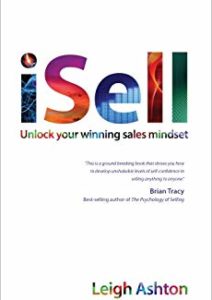You’ve been there.
They love the product. They like you. The price is right. But still they won’t commit.
You start to get paranoid. Is it me? What am I doing wrong? Why won’t they just say yes? You question your sales skills and so on.
And yes, sometimes it goes the other way too. There are those days when the customer seems only too keen to commit. You’ve barely had time to even make the pitch and explain the product before they’re ready to buy. Quick sale. No problem. Yippee!
And both of these scenarios can happen the same day. You more or less sell the same way to each, yet one person stalls, while the other can’t sign on the dotted line quickly enough.
What’s the differentiating factor here?
So why do some people buy in an instant, and others take days, weeks, even years, or never end up buying at all?! How do you explain away these slow coach buyers? Not the decision maker? Timing not right? Someone in their team holding them up?
For me the clear reason and REAL reason why they don’t buy from you no matter how perfect your option is for them, is because they are not feeling enough pain.
Stay with me here! I’ll explain.
These customers are just not hurting enough. Distress, pain, call it what you will… people in pain buy more quickly and are way less price sensitive. They have a problem that’s causing them or their business serious distress and they need your solution to solve it. These customers are heaven sent, because they are desperate for a solution to their suffering. If you’re that solution then congrats – you’ve made the sale.
You will suffer if you don’t spot their pain
These customers need to be discovered by you before they are discovered by your competitors. Because if you don’t make the sale, your competitor will. Your job here is to make sure that you’re the one to secure the deal.
Think about it. If you let your competitor step in and make that sale then you’ve not only lost that sale, but probably all the follow up sales too, and all the referrals that the customer is likely to be making after experiencing a product or service that solves all of their problems. A slightly worrying thought isn’t it?!
Introducing Different Customer Pain Types
How can you make sure you win the sale ahead of your competitor? Because, make no mistake, if the potential customer is ‘suffering’ enough, somebody is sure to get the sale, so you may as well make sure it’s you!
To get ahead – and get the deal, you have to know everything there is to know about the pain, the challenges, your potential customer is facing. And make sure they are 100% aware of the consequences if they do nothing.
In a B2B environment there are three levels of pain you need to remind your customers that they have.
1st Level of pain – Technical pain
You’ll need to elicit statements which acknowledge the distress they are in. Obviously it has to be an area of distress that you have a solution for – and good open questions will ascertain this.
Questions to elicit technical pain statements…
1) What’s the biggest challenge you’re facing right now in the area of ….?
2) Tell me about the problems you’re experiencing with…?
Use follow up questions as required. This helps them to define the specific challenges they are facing. It’s always good to get clarity on the issue.
2nd Level of pain – Business impact of the pain
Get them to relay the impact that this distress is having on their organization, especially from a business/financial standpoint. Get them to quantify it… what is the financial cost of the issue? What else is it costing them? Lost productivity? Declining morale?
Question to elicit business impact statements…
1. What would you say the overall impact has been on your business?
This enables them to really quantify how much it’s costing the company. And starts to alert them to the benefits they could accrue if they could alleviate this pain.
3rd Level of pain – Personal impact of the pain
Usually ignored by the sales person, this level of impact is crucial! Focus in on what the overall personal and emotional effect is of the above issues. Are these issues causing them to stay late in the office so they end up missing their kids’ bedtimes? Not been able to take a vacation in years? Getting stressed and then arguing with team members? If you can get your customers to feel the personal impact of not buying from you then you are much more likely to make the sale.
Questions to elicit personal impact statements…
1) How important is this to you personally?
2) What makes this so important?
This can be a real lightbulb moment for your potential client. They realize it’s not just a work matter, it’s affecting everything else too.
So now they are much closer to knowing the exact issue, what it’s costing the business – and the impact it’s having on them, maybe their career, their relationships.
Now you know the full details of their problem, you’re in a brilliant position to a) alert them to exactly how your product or service is the perfect fit and b) remind them of all those issues (pains) they won’t have any more once they buy from you.
Helping the customer
To be clear…this isn’t about being manipulative or making customers feel bad, it’s about helping them to see the true overall impact of not finding a solution to the issue. Many customers will go for years suffering at the hands of something that you may have the perfect solution for! See this as a way to show your true value and a way to help your customer achieve their goals.












Comments